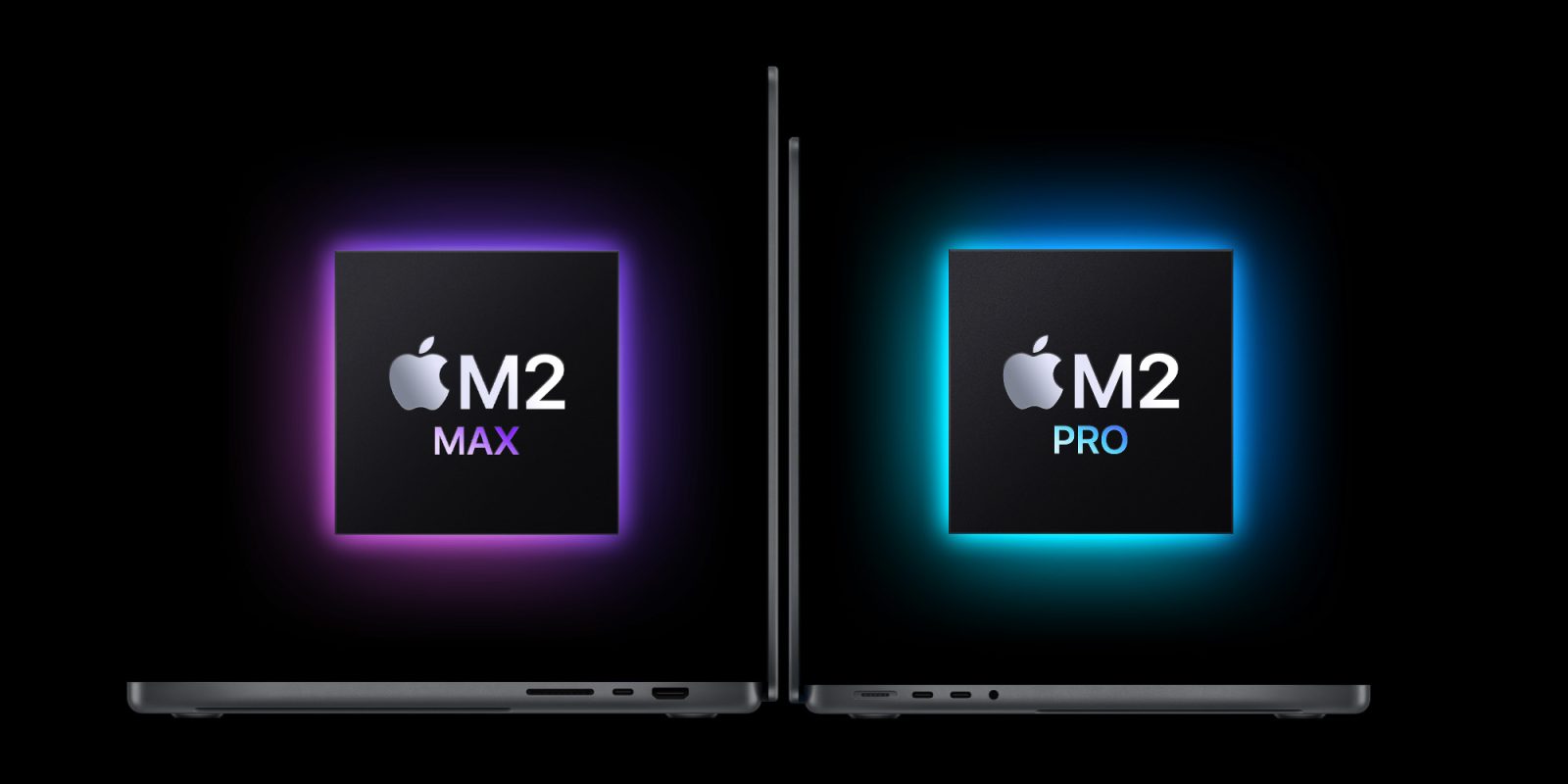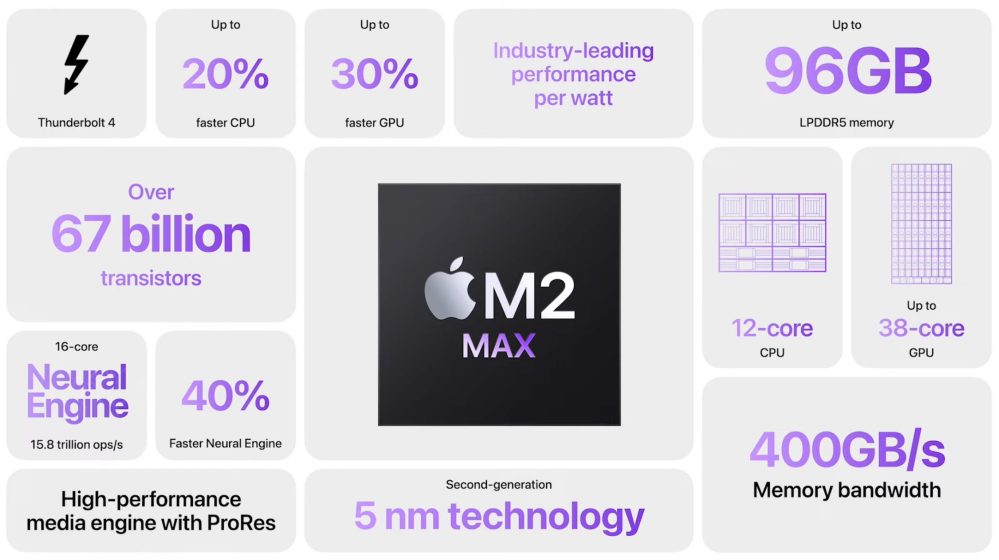
Apple officially unveiled its new M2 Pro and M2 Max chips today, debuting first in new MacBook Pro and Mac mini updates. These new chips mark the expansion of the M2 chip to Apple’s higher-end Macs for the first time, but just how much of a performance boost should you expect? Here’s what Apple says.
M2 Pro performance
The new M2 Pro chip is available in the new Mac mini as well as the 14-inch and 16-inch MacBook Pro. This is the first time Apple has added a higher-performance Apple Silicon chip configuration to the Mac mini.
Here’s a rundown of some of the performance claims Apple has made about the M2 Pro chip:
- Built using a “second-generation 5-nanometer process technology”
- 40 billion transistors, which is nearly 20% more than the M1 Pro chip
- When there are more transistors on the same size chip, the gap between transistors is smaller. This leads contributes to improvements in performance and efficiency.
- 200GBs of unified memory bandwidth — twice that of M2
- Multithreaded CPU performance is up to 20% faster than the M1 Pro.
- Graphics speeds are up to 30% faster than the M1 Pro, “resulting in huge increases in image processing performance and enabling console-quality gaming.”

Here are some app-specific benchmarks shared by Apple. First, image processing in Photoshop with the 16-inch MacBook Pro:
- M2 Pro is up to 40% faster than the 16-inch MacBook Pro with an M1 Pro chip.
- M2 Pro is up to 80% faster than the 16-inch MacBook Pro with the Intel Core i9 processor.
Code compiling in Xcode:
- M2 Pro can compile code up to 25% faster than M1 Pro.
- M2 Pro can compile code up to 2.5x faster than MacBook Pro with an Intel Core i9 processor.
M2 Max performance
The M2 Max chip is only currently available in the 14-inch and 16-inch MacBook Pro. Here’s what Apple says about performance improvements with the M2 Max chip in comparison to other processors:
- Also built using a second-generation 5-nanometer process technology
- 67 billion transistors: 10 billion more than M1 Max and more than 3x that of M2
- When there are more transistors on the same size chip, the gap between transistors is smaller. This leads contributes to improvements in performance and efficiency.
- 400GBs of unified memory bandwidth – twice that of M2 Pro, 4x that of M2
- Graphics speeds are up to 30% faster than M1 Max performance.
- Two video encode engines and two ProRes engines for 2x faster video encoding than M2 Pro
9to5Mac’s Take
Apple is obviously only going to share results and comparisons that paint the new M2 Pro and M2 Max chips in a good light. For the M2 Max chip especially, Apple hasn’t provided a whole lot of data on what to expect. The testing and subsequent results from Apple can also vary wildly based on your testing environment and what exact configurations you’re using.

I do think Apple was a bit vaguer about performance gains in its announcement of the M2 Pro and M2 Max chips because they offer smaller improvements than other year-over-year updates. This also aligns with what we saw in comparisons between the standard M1 and M2 chips last year.
The key thing to remember is that most people aren’t updating their MacBook Pro every generation. The comparison between the M1 Pro and M2 Pro isn’t useful for most people. A more useful comparison, as Apple seems to realize, is comparing performance to older machines.
We’ll learn more about the M2 Pro and M2 Max chips once full reviews of the new MacBook Pro and Mac mini are published next week. Currently, those reviews are expected to be published on Monday, January 23.
What do you think of Apple’s claims about the performance of the new MacBook Pro and Mac mini? Are you planning to upgrade this year? Let us know in the comments.
FTC: We use income earning auto affiliate links. More.




Comments